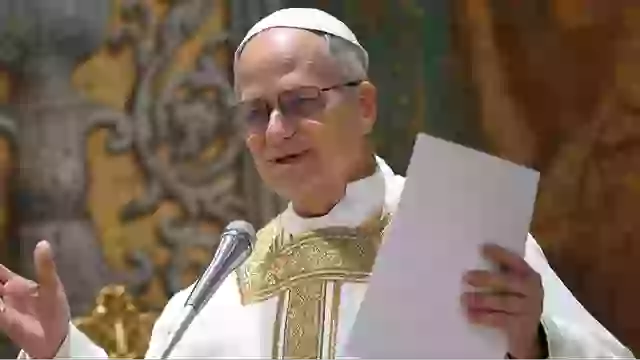In a moment reverberating with both history and hope, Pope Leo XIV officially announced that Carlo Acutis, the beloved teenage programmer and devout Catholic, will be canonized as a saint on September 7, 2025. The declaration not only marks a personal milestone for the young faithful who revere him—it also ushers in a new era for the Catholic Church, as Acutis becomes the first Millennial saint ever recognized.
A Digital Apostle in a Digital Age
Born in 1991 in London and raised in Milan, Carlo Acutis was no ordinary teenager. While many of his peers were navigating adolescence through social media and school exams, Carlo was building a website cataloguing Eucharistic miracles around the world. A self-taught coder by the age of 9, Carlo fused his deep religious devotion with his passion for technology.
“Jesus is my great friend,” he once wrote, “and the Eucharist is my highway to heaven.”
This wasn’t rhetoric—it was how he lived. Carlo went to daily Mass, prayed the Rosary faithfully, and was known for his kindness toward the poor and marginalized. But what set him apart in the eyes of millions was how he brought his faith to the internet in ways that still influence young Catholics today.
The Path to Sainthood
Carlo died suddenly in 2006 at age 15 after being diagnosed with an aggressive form of leukemia. Though his life was short, his impact was immense. He was beatified in 2020 after a miracle was attributed to his intercession: a young Brazilian boy suffering from a rare pancreatic disorder was inexplicably cured after prayers were offered to Carlo.
But sainthood in the Catholic Church typically requires two confirmed miracles. In 2024, the Congregation for the Causes of Saints concluded its investigation into a second healing—a Costa Rican university student who fully recovered from a traumatic brain injury after her mother prayed at Carlo’s tomb in Assisi. Medical experts and theologians deemed it unexplainable by natural means.
On June 13, 2025, Pope Leo XIV—only weeks into his papacy—announced in his first consistory that the Church would officially canonize Carlo during the Holy Year of 2025, choosing September 7 as the date. It’s a moment that theologians are already calling “a canonization for the digital century.”
More Than a Miracle: A Cultural Symbol
While saints are typically associated with mysticism, martyrdom, or monastic life, Carlo Acutis is a symbol of something new: sanctity rooted in modern life. He wore Nike sneakers, played Pokémon, and had a sweet tooth. But he also believed that every moment—every click, every gesture—could be made holy.
“He is a saint not because he avoided technology,” said Fr. Roberto Salvi, rector of the Sanctuary of the Eucharistic Miracles in Assisi. “He is a saint because he baptized it with beauty, with truth, and with love for Christ.”
This authenticity has made him especially powerful among Gen Z and Millennial Catholics. His beatification ceremony in Assisi drew over 41 million online viewers, a number usually reserved for global sporting events or royal weddings.
A Ceremony of Symbolism
The canonization ceremony will be held in St. Peter’s Square and is expected to draw hundreds of thousands of pilgrims, especially young people. Vatican officials have confirmed that Pope Leo XIV will preside, making this his first canonization as pope. Notably, the event will coincide with the Feast of the Nativity of the Blessed Virgin Mary—a day closely associated with new beginnings and spiritual rebirth.
The Vatican also confirmed that Acutis will be canonized alongside Blessed Pier Giorgio Frassati, an early-20th-century layman known for his work with the poor. While separated by nearly a century, both men shared a common commitment to living vibrant, joy-filled Christian lives outside of traditional religious vocations.
What This Means for the Church
The canonization of Carlo Acutis is more than ceremonial—it is deeply strategic. It reflects Pope Leo XIV’s vision for a Church that does not fear the present moment but engages it head-on.
In a recent homily, Pope Leo remarked:
“Carlo shows us that sanctity is not reserved for ancient times or remote deserts. It is alive on school buses, in coding labs, and behind smartphones.”
Indeed, Acutis’s life challenges outdated stereotypes about youth disengagement from faith. His witness offers an antidote to digital alienation by pointing to a life rooted in divine presence—even online.
A Legacy That Clicks
Carlo once said, “We are all born as originals, but many die as photocopies.” His canonization invites a generation craving authenticity to reclaim their spiritual originality.
In Milan, a mural of Carlo now overlooks a popular skate park. In São Paulo, his Eucharistic website is part of catechism classes. And in cyberspace, his social media legacy continues to inspire through quotes, prayers, and digital art.
Churches in the U.S., the Philippines, and Nigeria have already begun preparing for his feast day with “digital holy hours,” inviting youth to bring laptops, phones, and tablets into adoration chapels—to pray not in spite of their tech, but through it.
Final Thoughts
On September 7, when the bells of St. Peter’s ring out and the words “Sanctus Carlo Acutis” are proclaimed to the world, a new precedent will be set—not just for who can be a saint, but for what holiness can look like in a digital age.
It’s not about perfect lives lived in monasteries. It’s about grace showing up in the middle of Wi-Fi, hospital beds, cafeteria conversations, and quiet little yeses whispered into the glow of a screen.
Carlo’s canonization is the Church’s reminder that even in the age of algorithms, heaven still has room for teenage saints in sneakers.










